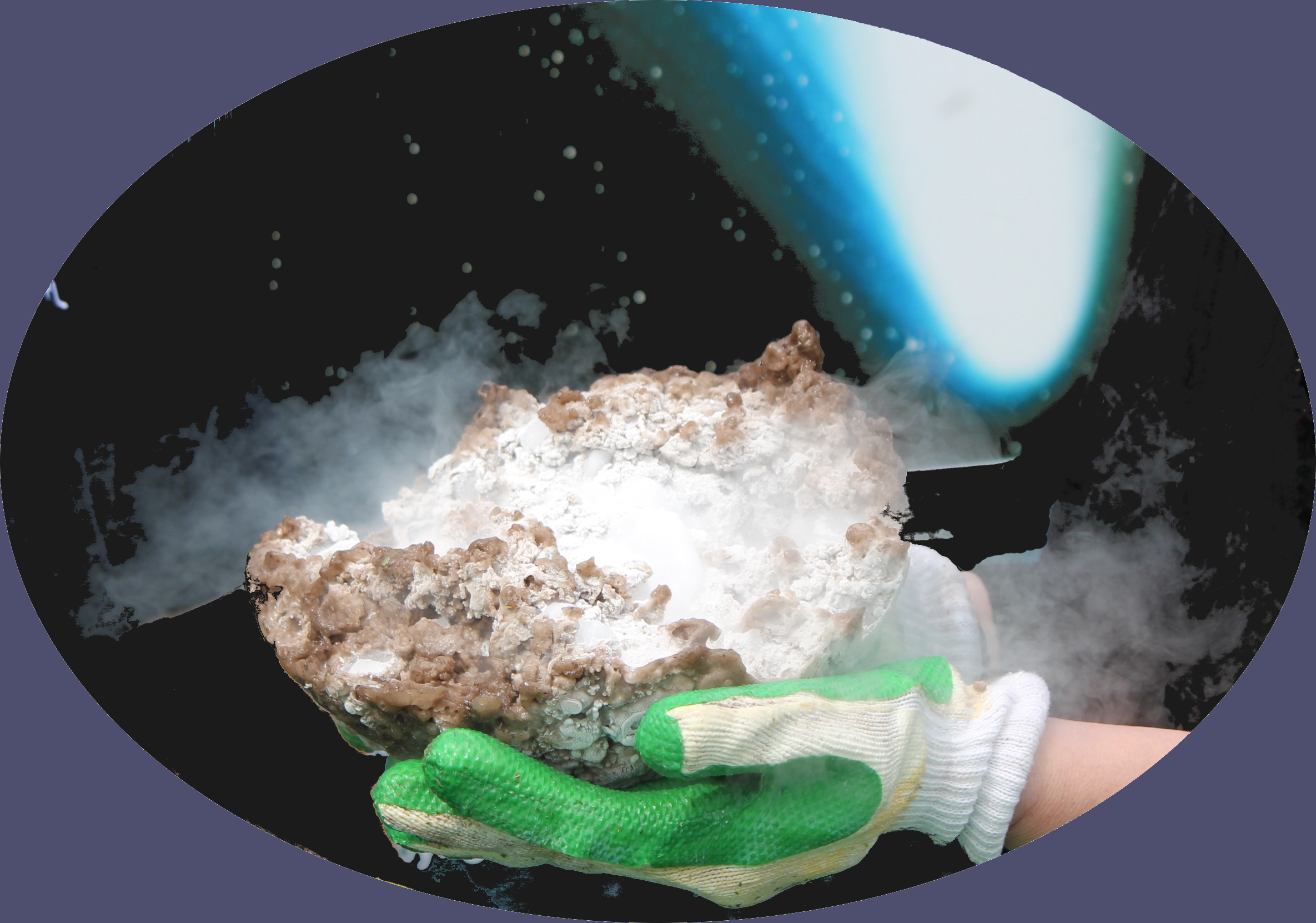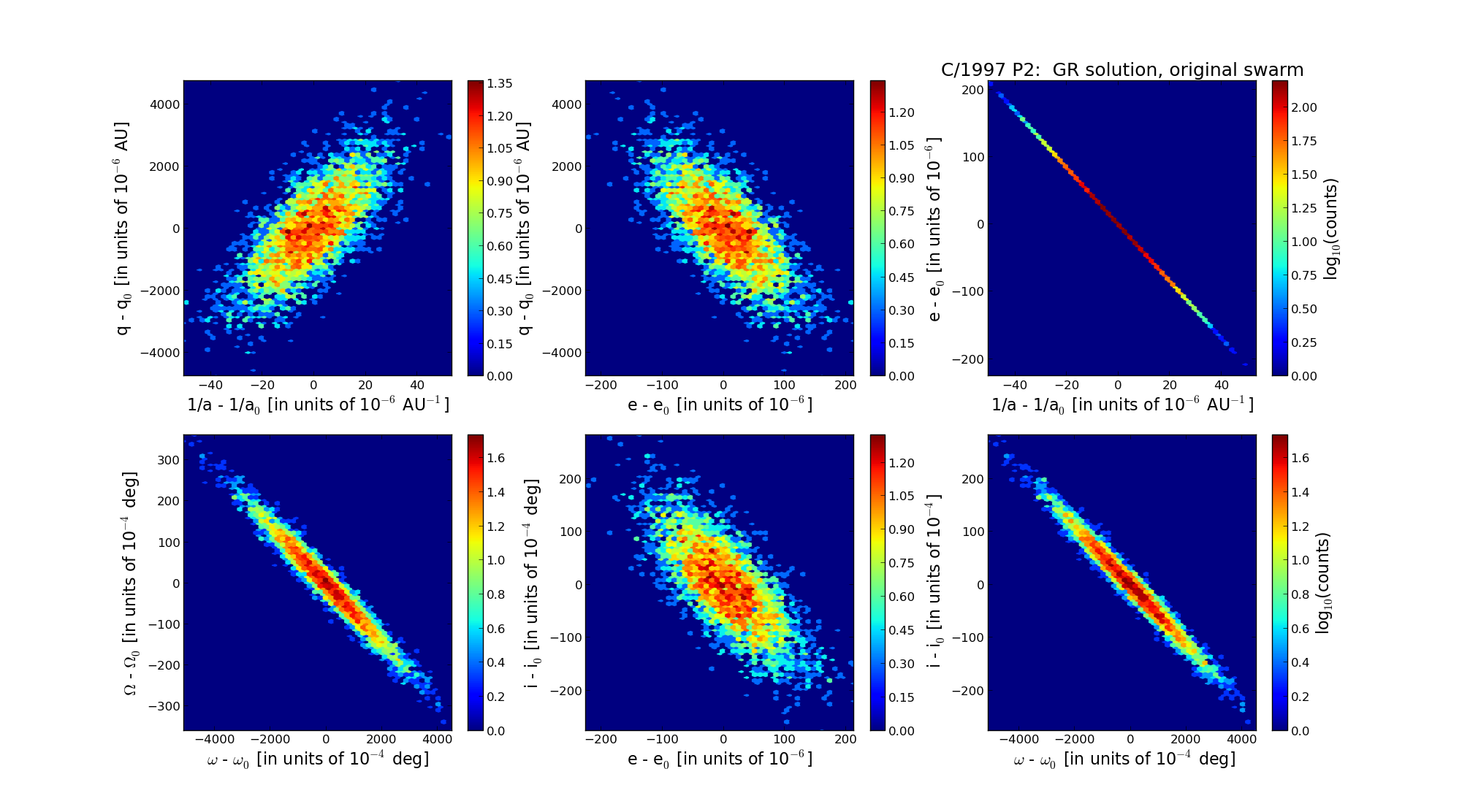| Solar System Dynamics & Planetology Group |
 |
C/1997 P2 Spacewatch |  |
| Solar System Dynamics & Planetology Group |
 |
C/1997 P2 Spacewatch |  |
| number of observations | 95 |
| number of residuals | 184 |
| data interval | 1997 Aug. 12 — 1997 Sep. 30 |
| rms [arcsec] | 0.59 |
| orbit quality class | 2b |
| Epoch (TT) | 19970820.0 | = JD 2450680.5 |
| time of perihelion passage (TT) | 19970830.305268 | ± 0.743940 |
| perihelion distance | 4.26460692 | ± 0.00106347 |
| eccentricity | 1.02825332 | ± 0.00012512 |
| argument of perihelion [deg] | 24.352136 | ± 0.128813 |
| longitude of the ascending node [deg] | 302.929810 | ± 0.010070 |
| inclination [deg] | 14.592497 | ± 0.007105 |
| inverse semimajor axis [10-6 au-1] | -6625.07 | ± 32.33 |

| Epoch (TT) | 16940120 | |
| time of perihelion passage (TT) | 19970914.383404 | ± 0.774567 |
| perihelion distance | 4.21862723 | ± 0.00125799 |
| eccentricity | 1.00005882 | ± 0.00005806 |
| argument of perihelion [deg] | 25.983973 | ± 0.133742 |
| longitude of the ascending node [deg] | 303.456441 | ± 0.009622 |
| inclination [deg] | 14.535008 | ± 0.007491 |
| inverse semimajor axis [10-6 au-1] | -13.94 | ± 13.77 |

| Epoch (TT) | 22780320 | |
| time of perihelion passage (TT) | 19970825.634391 | ± 0.748724 |
| perihelion distance | 4.24753952 | ± 0.00110948 |
| eccentricity | 1.00982224 | ± 0.00013216 |
| argument of perihelion [deg] | 24.448151 | ± 0.126797 |
| longitude of the ascending node [deg] | 302.238093 | ± 0.007861 |
| inclination [deg] | 14.616409 | ± 0.006823 |
| inverse semimajor axis [10-6 au-1] | -2312.45 | ± 31.63 |